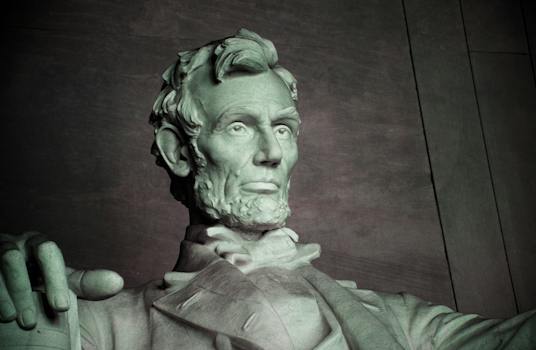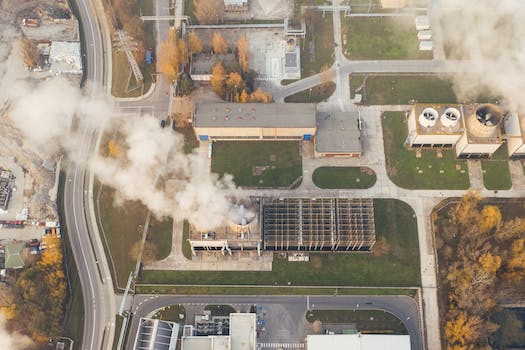

-
Table of Contents
"The Era of Hatred: Unmasking the Divisions within America."
Introduction
The Era of Hatred in the United States refers to a period in American history characterized by intense animosity, hostility, and division among its citizens. This era was marked by various social, political, and cultural factors that fueled hatred and deepened societal divisions within the nation. It is a significant chapter in American history that has had lasting impacts on the country's social fabric and collective memory.
The Rise of Hate Crimes in the United States
The United States has long prided itself on being a land of opportunity and freedom, a melting pot of cultures and ideas. However, in recent years, there has been a disturbing rise in hate crimes across the nation. This surge in hatred and violence has left many wondering what has caused this shift and what can be done to address it.
One of the key factors contributing to the rise of hate crimes in the United States is the increasing polarization of society. In an era where political and social divisions are becoming more pronounced, it is not surprising that these divisions are spilling over into acts of violence. People are becoming more entrenched in their beliefs and less willing to listen to opposing viewpoints, leading to a climate of hostility and animosity.
Another factor fueling the rise of hate crimes is the influence of social media. While social media platforms have the potential to connect people and foster understanding, they have also become breeding grounds for hate speech and extremist ideologies. The anonymity provided by the internet allows individuals to express their most hateful thoughts without fear of consequences. This has created echo chambers where like-minded individuals reinforce each other's prejudices, leading to a further radicalization of beliefs.
Furthermore, the rhetoric of political leaders has played a significant role in the rise of hate crimes. When leaders use divisive language and promote discriminatory policies, it sends a message that it is acceptable to target certain groups. This has emboldened individuals who harbor hatred and prejudice, leading to an increase in hate crimes. It is crucial for leaders to recognize the impact of their words and take responsibility for fostering a climate of inclusivity and respect.
The rise of hate crimes in the United States is not limited to a particular region or demographic. It affects communities across the nation and targets individuals based on their race, religion, sexual orientation, and other characteristics. This widespread nature of hate crimes highlights the urgent need for comprehensive measures to address this issue.
Law enforcement agencies play a crucial role in combating hate crimes. It is essential for these agencies to prioritize the investigation and prosecution of hate crimes, ensuring that perpetrators are held accountable for their actions. Additionally, law enforcement should work closely with communities to build trust and encourage reporting of hate crimes. This can be achieved through community outreach programs and initiatives that educate the public about the consequences of hate crimes.
Education also plays a vital role in addressing the rise of hate crimes. By promoting tolerance, empathy, and understanding in schools, we can create a generation of individuals who reject hatred and embrace diversity. Schools should incorporate anti-bullying and anti-discrimination programs into their curriculum, teaching students the importance of respecting others and celebrating differences.
In conclusion, the rise of hate crimes in the United States is a troubling trend that demands immediate attention. Factors such as societal polarization, the influence of social media, and divisive rhetoric from political leaders have contributed to this surge in hatred and violence. To combat this issue, it is crucial for law enforcement agencies to prioritize the investigation and prosecution of hate crimes, while also working closely with communities. Additionally, education plays a vital role in promoting tolerance and understanding among future generations. By addressing these factors and implementing comprehensive measures, we can strive towards a more inclusive and harmonious society.
The Impact of Social Media on the Spread of Hatred

The Impact of Social Media on the Spread of Hatred
In recent years, the United States has witnessed a disturbing rise in hatred and division among its citizens. While there are undoubtedly multiple factors contributing to this troubling trend, one cannot overlook the significant role that social media plays in the spread of hatred. Social media platforms have become breeding grounds for toxic ideologies, allowing individuals to easily disseminate their hateful beliefs to a wide audience. This article will explore the impact of social media on the spread of hatred in the United States, highlighting the various ways in which these platforms have facilitated the proliferation of divisive ideologies.
First and foremost, social media provides a platform for individuals to express their opinions freely, regardless of how extreme or hateful they may be. Unlike traditional media outlets, which are subject to editorial guidelines and regulations, social media platforms offer a virtually unrestricted space for individuals to voice their thoughts. This lack of oversight allows hate speech to flourish, as individuals can freely propagate their prejudiced views without fear of consequence. Consequently, social media has become a breeding ground for hate groups and extremist ideologies, providing them with a platform to recruit new members and spread their toxic beliefs.
Furthermore, social media algorithms play a significant role in the spread of hatred by creating echo chambers and reinforcing existing biases. These algorithms are designed to show users content that aligns with their interests and beliefs, creating a personalized online experience. While this may seem harmless at first, it inadvertently leads to the formation of echo chambers, where individuals are only exposed to information that confirms their existing biases. This reinforcement of preconceived notions fosters an environment where hatred can thrive, as individuals are shielded from alternative perspectives and are more likely to accept and spread hateful ideologies.
Moreover, the anonymity provided by social media platforms allows individuals to engage in hateful behavior without fear of accountability. Online anonymity emboldens individuals to express their most vitriolic thoughts, as they are shielded from the consequences of their actions. This anonymity not only encourages the spread of hatred but also enables cyberbullying and harassment, further exacerbating the division and animosity within society. The lack of accountability on social media platforms perpetuates a culture of hatred, as individuals feel empowered to express their most hateful beliefs without fear of retribution.
Additionally, the viral nature of social media amplifies the spread of hatred, as hateful content can quickly reach a vast audience within a short period. With just a few clicks, a hateful post or video can be shared and reshared, reaching thousands, if not millions, of individuals. This rapid dissemination of hateful content contributes to the normalization of hatred within society, as individuals are constantly exposed to divisive ideologies. The viral nature of social media not only facilitates the spread of hatred but also makes it increasingly difficult to combat, as hateful content can quickly overshadow positive messages of unity and tolerance.
In conclusion, social media has had a profound impact on the spread of hatred in the United States. The unrestricted nature of these platforms, coupled with algorithms that reinforce existing biases, anonymity, and the viral nature of content, have created an environment where hatred can thrive. To address this issue, it is crucial for social media platforms to take responsibility and implement stricter regulations to curb the spread of hate speech. Additionally, individuals must be mindful of the content they consume and share, actively seeking out diverse perspectives and promoting messages of unity and understanding. Only through collective efforts can we hope to combat the era of hatred that has gripped the United States.
Addressing the Root Causes of Hatred in American Society
The United States has long prided itself on being a melting pot of cultures, a nation built on the principles of freedom and equality. However, in recent years, there has been a disturbing rise in hatred and division within American society. From racially motivated violence to religious discrimination, it is clear that something is deeply wrong. In order to address this issue, it is crucial to understand the root causes of this era of hatred.
One of the primary factors contributing to the rise of hatred in the United States is the fear of the unknown. As the country becomes more diverse, some individuals feel threatened by the changing demographics. This fear often leads to a sense of superiority and a desire to protect one's own identity. This can manifest in acts of discrimination and prejudice against those who are perceived as different.
Another significant factor is the influence of media and social media. In today's digital age, information spreads at an unprecedented rate. Unfortunately, this also means that misinformation and propaganda can easily be disseminated. This has led to the creation of echo chambers, where individuals only consume news and opinions that align with their own beliefs. This lack of exposure to diverse perspectives further fuels hatred and reinforces existing biases.
Furthermore, economic insecurity plays a role in the rise of hatred. As the gap between the rich and the poor widens, many Americans feel left behind and marginalized. This sense of frustration and resentment can be directed towards certain groups, blaming them for their own economic struggles. This scapegoating perpetuates stereotypes and fosters an environment of animosity.
Education also plays a crucial role in addressing the root causes of hatred. By promoting inclusivity and teaching empathy, schools can help foster a more tolerant and understanding society. It is essential to educate young people about the dangers of hatred and the importance of embracing diversity. By instilling these values early on, we can hope to create a future generation that is more accepting and compassionate.
In addition to education, it is important for leaders and policymakers to take a stand against hatred. By implementing and enforcing laws that protect marginalized communities, we can send a clear message that discrimination will not be tolerated. It is also crucial for leaders to use their platforms to promote unity and denounce hatred in all its forms.
Finally, fostering dialogue and promoting understanding between different groups is essential in addressing the root causes of hatred. By encouraging open and respectful conversations, we can bridge the divide and break down stereotypes. This can be done through community events, interfaith dialogues, and initiatives that bring people from different backgrounds together.
In conclusion, the era of hatred in the United States is a complex issue with multiple root causes. Addressing these causes requires a multi-faceted approach that includes education, leadership, and fostering dialogue. By understanding and addressing the fear of the unknown, the influence of media, economic insecurity, and promoting inclusivity, we can hope to create a society that is more tolerant and accepting. It is only through these efforts that we can truly address the root causes of hatred and work towards a more united and harmonious America.
Q&A
1. What was the Era of Hatred in the United States?
The Era of Hatred refers to a period in American history characterized by intense social and political divisions, animosity, and hostility among different groups within the country.
2. When did the Era of Hatred occur in the United States?
The Era of Hatred is not a specific time period but rather a general term used to describe various periods in American history marked by significant divisions and animosity, such as the Civil War era, the Civil Rights Movement, and the current political climate.
3. What were the main causes of the Era of Hatred in the United States?
The causes of the Era of Hatred in the United States are complex and multifaceted, often stemming from deep-rooted issues such as racial tensions, socioeconomic disparities, political polarization, and ideological differences.
Conclusion
In conclusion, the Era of Hatred in the United States refers to a period characterized by intense animosity, division, and hostility among different groups within the country. This era has witnessed a rise in hate crimes, political polarization, and social unrest, fueled by factors such as racial tensions, ideological differences, and socioeconomic disparities. The Era of Hatred has had profound implications for American society, challenging the nation's values of unity, tolerance, and inclusivity. Efforts to address and overcome this era require fostering empathy, promoting dialogue, and working towards a more equitable and harmonious society.











